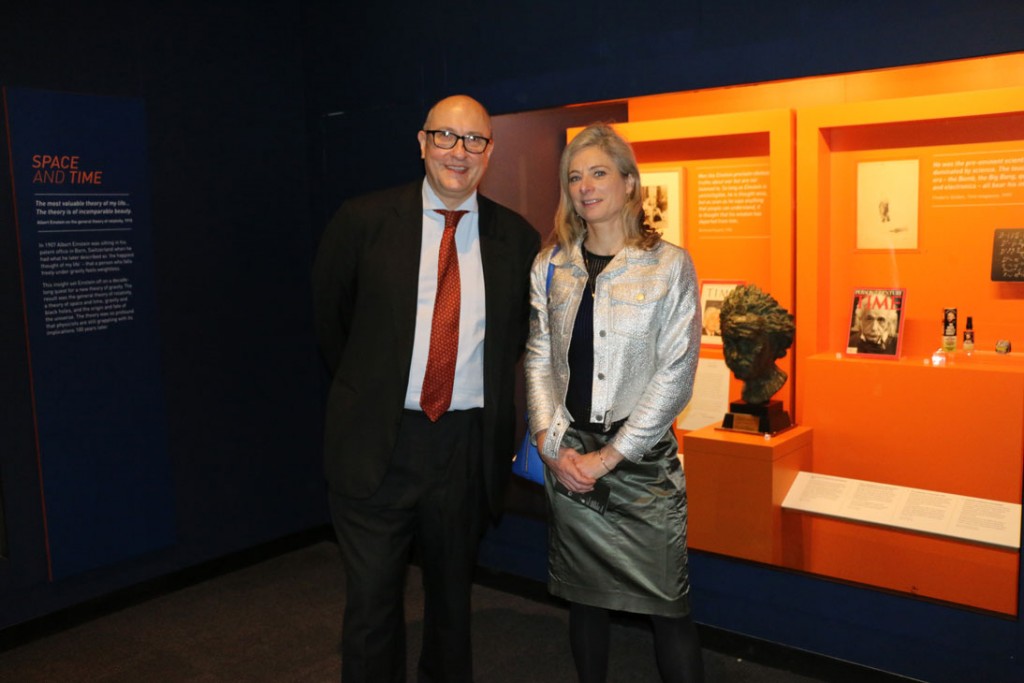Isaac Newton was the first to show that the laws that govern the movements of heavenly bodies are the same as those that operate on Earth.
Now the Harvard particle physicist Lisa Randall will echo his feat when it comes to linking an elusive and mysterious cosmic source of gravity, dark matter, to events on Earth, as part of a wider meditation on under-appreciated and unexpected connections between the tiniest particles of all and the greatest structures in the universe.
Randall, who was one of the distinguished figures who contributed to Einstein’s Legacy, a Museum exhibit marking the centenary of his theory of gravity (the general theory of relativity), has written Dark Matter and the Dinosaurs: The Astounding Interconnectedness of the Universe to connect dark matter to the celestial object that killed off the dinosaurs some 66 million years ago with a cataclysmic impact on what she calls our ‘random tiny perch here on Earth’.

We know dark matter exists by inferring that it is real, rather than directly observing it. Analyse the movements of stars in the heavens and you can work out how much matter is making them swirl round in galactic islands and how much makes galaxies cluster together – in other words, you can work out how much mass makes the universe look the way it does.
But the universe is not what it seems.
As long ago as 1933, the independent thinker and ‘oddball’ Fritz Zwicky observed that galaxies in the gigantic Coma Cluster are moving around faster than you’d expect from the amount of visible matter, as if the tug of something invisible is holding the cluster together, explains Randall.
Even more convincing evidence came from Vera Rubin and her collaborator Kent Ford of the Carnegie Institution in Washington in the late 1970s from studying the speed of stars orbiting the Andromeda galaxy (and later other galaxies).
Observations such as this suggest that stars account for only about one per cent of the mass of the universe. Ghostly neutrino particles contribute, at most, a similar amount. Throw in gas clouds, planets and other objects, and you get another 10 per cent. That leaves about 85 per cent unaccounted for – this is dark matter.
Though unseen and unfelt ‘dark matter affects the expansion of the universe, the path of light rays passing to us from distant objects, the orbits of stars around the centres of galaxies, and many other measurable phenomena,’ she says, adding that direct detection remains a ‘holy grail’ of researchers.
Although scientists have largely assumed that dark matter only interacts with itself very weakly, if at all, Randall suggests that a fraction of dark matter also interacts through a force analogous to electromagnetism, which she dubs “dark light” (as she explains: ‘the new type of dark matter experiences a force like electromagnetism – but one that is invisible to the ordinary matter of our world.’)
Only dark matter particles would experience the new force’s influence. This new kind of dark matter could form an invisible disk that overlaps with the visible disk of spiral arms in our own galaxy, the Milky Way, and Randall argues that the demise of the dinosaurs might have occurred when this dark disk interrupted the orbit of a comet on the outer fringes of the solar system, sending the icy body on a collision course with Earth.
Even though some of the most radical ideas of cosmology (for instance the ideas of inflation and the multiverse) challenge the never-ending dialogue between theory and experiment that lies the heart of the scientific method, Randall does set out various tests that could reveal the dark disk, not least looking for the gravitational effects of the disk on other stars in the Milky Way—or in another galaxy, for that matter.
With her enthralling book, Randall wants to show us how the pieces of the universe connect, discussing a great deal of modern physics on the way. ‘The big lesson at the most fundamental level is that the physics of elementary particles, the physics of the cosmos, and the biology of life itself all connect – not in some New-Age sense, but in remarkable ways that are well worth understanding.’
Lisa Randall, the leading cosmologist who contributed to the Museum’s Einstein’s Legacy exhibit, discussed her new book with Roger Highfield, Director of External Affairs, during a visit to Cosmonauts: Birth of the Space Age.